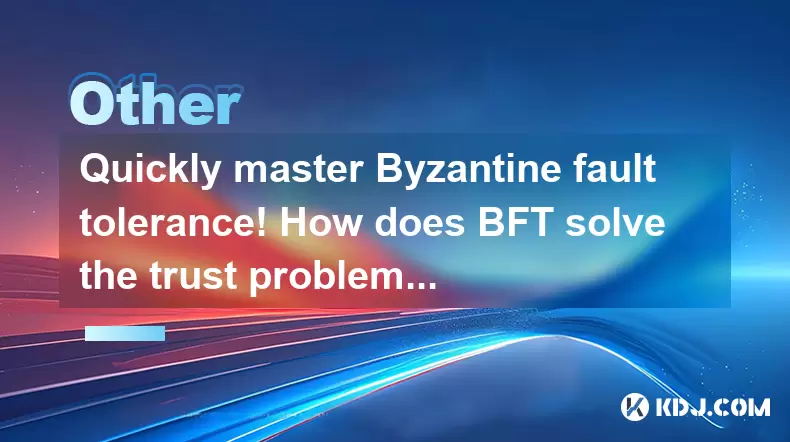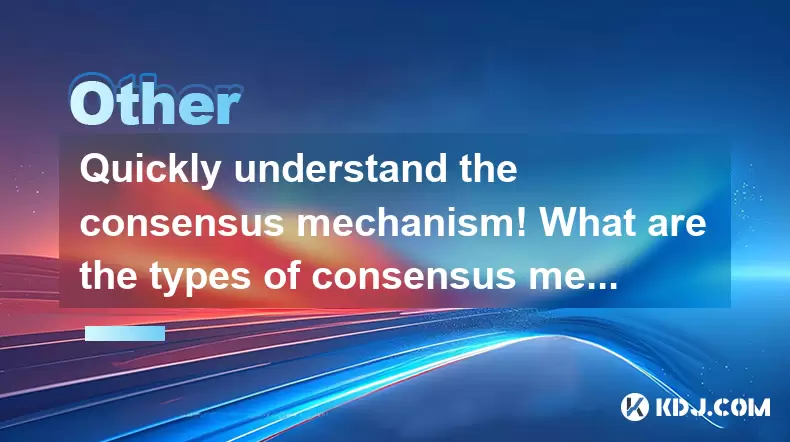-
 Bitcoin
Bitcoin $104,666.2535
-1.11% -
 Ethereum
Ethereum $2,604.2236
-0.30% -
 Tether USDt
Tether USDt $1.0004
0.01% -
 XRP
XRP $2.1999
-2.96% -
 BNB
BNB $662.8480
0.13% -
 Solana
Solana $154.1500
-2.28% -
 USDC
USDC $0.9997
-0.01% -
 Dogecoin
Dogecoin $0.1877
-3.71% -
 TRON
TRON $0.2735
0.73% -
 Cardano
Cardano $0.6652
-2.79% -
 Hyperliquid
Hyperliquid $34.7867
-5.55% -
 Sui
Sui $3.1797
-3.17% -
 Chainlink
Chainlink $13.7689
-3.00% -
 Avalanche
Avalanche $20.1646
-5.17% -
 UNUS SED LEO
UNUS SED LEO $9.0517
2.54% -
 Stellar
Stellar $0.2660
-3.05% -
 Bitcoin Cash
Bitcoin Cash $399.3521
-1.06% -
 Toncoin
Toncoin $3.1693
-0.70% -
 Shiba Inu
Shiba Inu $0.0...01275
-2.67% -
 Hedera
Hedera $0.1666
-3.71% -
 Litecoin
Litecoin $87.7347
-2.41% -
 Polkadot
Polkadot $3.9985
-3.88% -
 Ethena USDe
Ethena USDe $1.0013
0.00% -
 Monero
Monero $311.1939
-9.95% -
 Bitget Token
Bitget Token $4.7695
-0.58% -
 Dai
Dai $0.9999
0.00% -
 Pepe
Pepe $0.0...01180
-5.47% -
 Pi
Pi $0.6425
-1.21% -
 Aave
Aave $263.8906
-1.12% -
 Uniswap
Uniswap $6.2867
-6.01%
What conditions are required for blockchain traceability? Blockchain traceability implementation steps
Blockchain traceability enhances supply chains by providing transparent, immutable tracking of goods, reducing fraud and improving efficiency from origin to destination.
May 30, 2025 at 11:14 pm

Introduction to Blockchain Traceability
Blockchain traceability refers to the ability to track and verify the movement and history of assets or transactions across a blockchain network. This technology leverages the decentralized and immutable nature of blockchain to provide transparent and secure tracking solutions. Implementing blockchain traceability involves several key conditions and steps, each essential to ensuring the system's effectiveness and reliability.
Key Conditions for Blockchain Traceability
To implement blockchain traceability successfully, several foundational conditions must be met. These conditions form the bedrock upon which the entire traceability system is built.
1. Clear Data Standards and Protocols
Data standards and protocols are crucial for ensuring that all parties involved in the blockchain network can understand and interact with the data consistently. These standards dictate how data is formatted, stored, and exchanged. Without clear standards, the traceability system may become fragmented, leading to discrepancies and errors.
- Establish industry-specific data standards that all participants agree upon.
- Define protocols for data entry, validation, and transmission.
- Ensure compatibility with existing systems and technologies to facilitate integration.
2. Robust Security Measures
Security measures are vital to protect the integrity and confidentiality of the data on the blockchain. Given the sensitive nature of traceability data, the system must be fortified against potential cyber threats and unauthorized access.
- Implement encryption techniques to safeguard data both in transit and at rest.
- Use multi-signature wallets and smart contracts to enhance security and control over transactions.
- Regularly audit the blockchain network for vulnerabilities and address them promptly.
3. Transparent and Immutable Record-Keeping
Transparency and immutability are core features of blockchain technology that underpin traceability. Every transaction recorded on the blockchain should be verifiable by all network participants, and once recorded, it should be unalterable.
- Utilize a public or permissioned blockchain that allows for transparency while maintaining necessary privacy.
- Implement mechanisms for timestamping and hashing to ensure data integrity.
- Use consensus mechanisms like Proof of Work (PoW) or Proof of Stake (PoS) to validate transactions and maintain the blockchain's integrity.
4. Interoperability with Existing Systems
Interoperability is essential for blockchain traceability to function seamlessly within the broader ecosystem of existing technologies and systems. The blockchain solution should be able to interface with other databases and platforms to ensure a cohesive flow of information.
- Develop APIs and connectors to facilitate data exchange between the blockchain and other systems.
- Ensure compatibility with various blockchain networks and standards to avoid silos.
- Test interoperability extensively to identify and resolve any integration issues.
Steps to Implement Blockchain Traceability
Implementing blockchain traceability involves a series of steps that guide the development, deployment, and maintenance of the system. These steps are designed to ensure that the traceability solution meets the required conditions and functions effectively.
1. Define Objectives and Scope
The first step in implementing blockchain traceability is to clearly define the objectives and scope of the project. This involves understanding what assets or transactions need to be tracked and what specific outcomes are expected from the traceability system.
- Identify the assets or transactions that require traceability.
- Define the desired outcomes, such as improved transparency, efficiency, or compliance.
- Determine the scope of the project, including the stakeholders and systems involved.
2. Select the Appropriate Blockchain Platform
Choosing the right blockchain platform is crucial for the success of the traceability system. The platform should support the required features and meet the specific needs of the project.
- Evaluate different blockchain platforms based on factors like scalability, security, and cost.
- Consider whether a public, private, or consortium blockchain is most suitable for the project.
- Assess the platform's ability to integrate with existing systems and support the necessary data standards and protocols.
3. Design the Traceability System
Designing the traceability system involves mapping out the data flow, defining the structure of the blockchain, and developing the necessary smart contracts and interfaces.
- Create a detailed data flow diagram to illustrate how data will move through the system.
- Define the structure of the blockchain, including the types of transactions and blocks.
- Develop smart contracts to automate and enforce the rules of the traceability system.
- Design user interfaces and APIs to facilitate interaction with the blockchain.
4. Develop and Test the System
The development and testing phase is where the traceability system is built and rigorously tested to ensure it meets the defined objectives and functions as intended.
- Develop the blockchain network, smart contracts, and user interfaces according to the design specifications.
- Conduct thorough testing, including unit testing, integration testing, and user acceptance testing.
- Identify and resolve any issues or bugs that arise during testing.
- Perform stress tests to ensure the system can handle the expected load and scale as needed.
5. Deploy and Integrate the System
Once the traceability system has been developed and tested, it is ready for deployment and integration with existing systems. This step involves setting up the blockchain network and connecting it to other platforms and databases.
- Deploy the blockchain network on the chosen platform.
- Integrate the blockchain with existing systems using APIs and connectors.
- Train users and stakeholders on how to use the new traceability system.
- Monitor the system closely during the initial deployment phase to address any issues that arise.
6. Maintain and Update the System
Maintaining and updating the traceability system is an ongoing process that ensures it continues to meet the needs of the project and adapts to changes in the environment.
- Regularly monitor the system's performance and security.
- Update the system as needed to address new requirements or fix issues.
- Engage with stakeholders to gather feedback and make improvements.
- Stay informed about advancements in blockchain technology and incorporate them as appropriate.
Frequently Asked Questions
1. Can blockchain traceability be used for any type of asset?
Yes, blockchain traceability can be used for a wide range of assets, including physical goods, digital assets, and financial transactions. The key is to ensure that the blockchain system is designed to handle the specific characteristics and requirements of the assets being tracked.
2. What are the potential challenges in implementing blockchain traceability?
Some potential challenges include ensuring data privacy, managing the complexity of integrating with existing systems, and dealing with the technical expertise required to develop and maintain the blockchain network. Additionally, regulatory compliance and achieving consensus among stakeholders can be challenging.
3. How does blockchain traceability enhance supply chain management?
Blockchain traceability enhances supply chain management by providing a transparent and immutable record of all transactions and movements of goods. This improves visibility, reduces the risk of fraud, and enables faster and more accurate tracking of products from origin to destination.
4. Is it possible to implement blockchain traceability without a significant upfront investment?
While implementing blockchain traceability does require an initial investment in technology and expertise, there are ways to minimize costs. For example, using existing blockchain platforms and open-source solutions can reduce development expenses. Additionally, starting with a pilot project can help to validate the approach before scaling up.
Disclaimer:info@kdj.com
The information provided is not trading advice. kdj.com does not assume any responsibility for any investments made based on the information provided in this article. Cryptocurrencies are highly volatile and it is highly recommended that you invest with caution after thorough research!
If you believe that the content used on this website infringes your copyright, please contact us immediately (info@kdj.com) and we will delete it promptly.
- HCW9206 reagent has also been filed with the US Food and Drug Administration.
- 2025-06-05 05:50:12
- MIND of Pepe, Possibly the Best AI Agent Crypto of 2025, Has Just Passed $9M in Presale
- 2025-06-05 05:50:12
- Today's Top Crypto Gainers - WalletConnect (WCT), Chia (XCH), Solaxy (SOLX), Kaia (KAIA), and Cronos (CRO)
- 2025-06-05 05:45:12
- Dogecoin Regains Public Attention Through Its Price Surge, Which Results from Technical Indicators and Major Market Events
- 2025-06-05 05:45:12
- Coinbase is Joining the S&P 500 — a Milestone Moment for Crypto and the American Economy
- 2025-06-05 05:40:15
- Remittix (RTX): Is the New PayFi Token Going to 100x This Cycle?
- 2025-06-05 05:40:15
Related knowledge

Understand the IPFS protocol in one article! Why does IPFS replace HTTP?
Jun 01,2025 at 06:01pm
The InterPlanetary File System, commonly known as IPFS, is a protocol and network designed to create a more efficient, decentralized, and secure method for storing and sharing files. As the digital world evolves, the traditional HTTP (Hypertext Transfer Protocol) has shown limitations that IPFS aims to address. This article will delve into the intricaci...

Quickly master Byzantine fault tolerance! How does BFT solve the trust problem?
May 29,2025 at 02:43am
Introduction to Byzantine Fault ToleranceByzantine Fault Tolerance (BFT) is a crucial concept in the field of distributed computing, particularly within the cryptocurrency ecosystem. BFT addresses the challenge of achieving consensus in a network where some nodes might behave maliciously or fail unexpectedly. This article will delve into the mechanisms ...

Explain the principle of currency mixing in plain language! How does currency mixing protect privacy?
May 30,2025 at 07:35am
Currency mixing, often referred to as coin mixing or tumbling, is a process used in the cryptocurrency world to enhance privacy and anonymity. The principle behind currency mixing is simple yet effective: it breaks the direct link between the sender and the receiver of cryptocurrencies by mixing multiple transactions together. This makes it difficult fo...

Understand smart contracts in seconds! How do smart contracts execute automatically?
May 30,2025 at 02:43am
Smart contracts have revolutionized the way transactions are executed in the cryptocurrency world. They are self-executing contracts with the terms of the agreement directly written into code. This article will delve into the intricacies of smart contracts and explain how they execute automatically, providing a comprehensive understanding of this ground...

A graphic explanation of the Merkle tree! What are the uses of the Merkle tree?
May 31,2025 at 02:29am
Introduction to the Merkle TreeA Merkle tree, also known as a hash tree, is a fundamental data structure in the world of cryptocurrencies, especially within blockchain technology. It is used to efficiently and securely verify the integrity of large data sets. The concept was first introduced by Ralph Merkle in 1979, and it has since become a cornerstone...

Quickly understand the consensus mechanism! What are the types of consensus mechanisms?
May 30,2025 at 06:07am
Introduction to Consensus MechanismsIn the world of cryptocurrencies, the term consensus mechanism plays a crucial role in ensuring the integrity and security of transactions on a blockchain. A consensus mechanism is a system that enables network participants to agree on the state of the blockchain, thereby validating transactions and adding new blocks....

Understand the IPFS protocol in one article! Why does IPFS replace HTTP?
Jun 01,2025 at 06:01pm
The InterPlanetary File System, commonly known as IPFS, is a protocol and network designed to create a more efficient, decentralized, and secure method for storing and sharing files. As the digital world evolves, the traditional HTTP (Hypertext Transfer Protocol) has shown limitations that IPFS aims to address. This article will delve into the intricaci...

Quickly master Byzantine fault tolerance! How does BFT solve the trust problem?
May 29,2025 at 02:43am
Introduction to Byzantine Fault ToleranceByzantine Fault Tolerance (BFT) is a crucial concept in the field of distributed computing, particularly within the cryptocurrency ecosystem. BFT addresses the challenge of achieving consensus in a network where some nodes might behave maliciously or fail unexpectedly. This article will delve into the mechanisms ...

Explain the principle of currency mixing in plain language! How does currency mixing protect privacy?
May 30,2025 at 07:35am
Currency mixing, often referred to as coin mixing or tumbling, is a process used in the cryptocurrency world to enhance privacy and anonymity. The principle behind currency mixing is simple yet effective: it breaks the direct link between the sender and the receiver of cryptocurrencies by mixing multiple transactions together. This makes it difficult fo...

Understand smart contracts in seconds! How do smart contracts execute automatically?
May 30,2025 at 02:43am
Smart contracts have revolutionized the way transactions are executed in the cryptocurrency world. They are self-executing contracts with the terms of the agreement directly written into code. This article will delve into the intricacies of smart contracts and explain how they execute automatically, providing a comprehensive understanding of this ground...

A graphic explanation of the Merkle tree! What are the uses of the Merkle tree?
May 31,2025 at 02:29am
Introduction to the Merkle TreeA Merkle tree, also known as a hash tree, is a fundamental data structure in the world of cryptocurrencies, especially within blockchain technology. It is used to efficiently and securely verify the integrity of large data sets. The concept was first introduced by Ralph Merkle in 1979, and it has since become a cornerstone...

Quickly understand the consensus mechanism! What are the types of consensus mechanisms?
May 30,2025 at 06:07am
Introduction to Consensus MechanismsIn the world of cryptocurrencies, the term consensus mechanism plays a crucial role in ensuring the integrity and security of transactions on a blockchain. A consensus mechanism is a system that enables network participants to agree on the state of the blockchain, thereby validating transactions and adding new blocks....
See all articles























































































